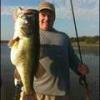
Randall replied to Mattlures's topic in General Bass Fishing Forum

Randall replied to gjones2397's topic in General Bass Fishing Forum

Randall replied to Low_Budget_Hooker's topic in General Bass Fishing Forum

Randall replied to bass2187's topic in General Bass Fishing Forum
We have placed cookies on your device to help make this website better. You can adjust your cookie settings, otherwise we'll assume you're okay to continue.

